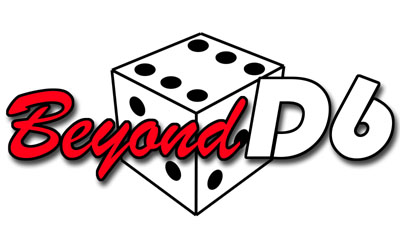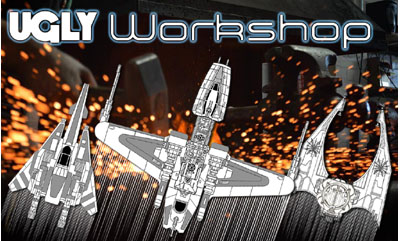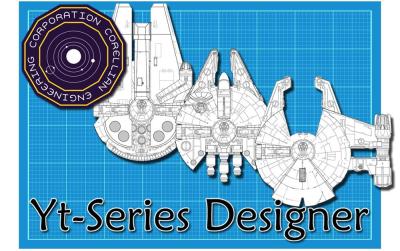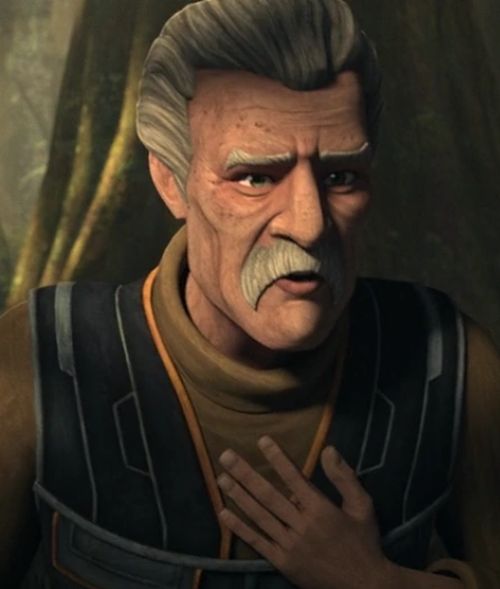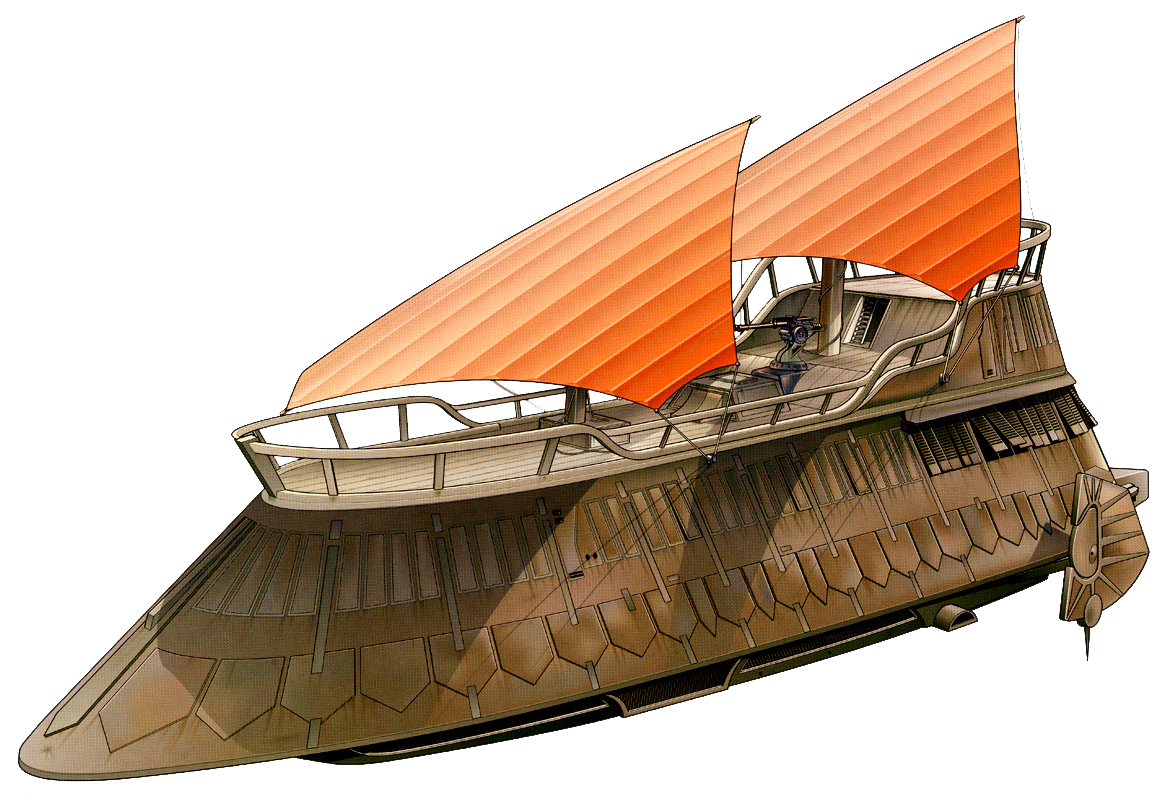 THE PEGASUS (Re-imagined Series)
Craft: Battlestar Pegasus (BSG-62)
Type: Colonial Mercury-class battlestar carrier/battleship
Scale: Capital
Dimensions:
-Length: 1789.8m (5872ft)
Skill: Capital ship piloting: Mercury battlestar
Crew: 2,500+
-Gunners: 618
-Troops: 500
-Skeleton: 200/+10
-Skeleton (With Autopilot): 1+/+15
-Autopilot: 0
Crew Skill: Astrogation 7D, capital ship piloting 7D, capital ship gunnery 6D+2, sensors 6D, starship gunnery 6D+2
-Autopilot: 4D (in all above skills)
Passengers: 100 (roughly standard, can carry hundreds more in emergencies)
Cargo Capacity: 40,000 metric tons
Consumables: 6 years
Cost: N/A
FTL Capable: Yes
Nav Computer: Yes
Maneuverability: 2D
Speed:
-Space: 7
Hull: 8D+2
Defenses:
-Ablative Armor: 2D
-Reactive Armor: 2D
-Shields: N/A
Sensors:
Passive: 75/1D
Scan: 150/3D
Search: 300/4D
Focus: 6/4D+2
SHIPS:
-Vipers: 200
-Raptors: 50
-Shuttles: 10
WEAPONS:
34 Primary Dual Kinetic Energy Weapons
Location: Scattered horizontally along the hull and flight pods
Fire Arc:
-4 front
-4 right/front/rear
-9 front/right/rear
-2 front/right
-2 rear/right
-9 front/left/rear
-2 front/left
-2 rear/left
Crew: 2 (can be used by autopilot)
Skill: Capital ship gunnery
Scale: Capital
Fire Control: 5D
Space Range: 3-15/30/60
Atmosphere Range: 50-1.5/3/6km
Damage:
-Flak Rounds: 6D (Blast Radius: 6D/5D/4D)
-High-Explosive Rounds: 8D+2
Ammo: 200 (reloadable magazines)
Rate of Fire: 1 or 2
550 Point-Defense Kinetic Energy Weapons
Location: Scattered about the hull
Fire Arc:
-80 front
-215 right
-215 left
-40 rear
Crew: 1 (can be used by autopilot)
Skill: Starship gunnery
Scale: Starfighter
Fire Control: 3D
Space Range: 1-4/15/30
Atmosphere Range: 50-400/1.5/3km
Damage:
-Flak Rounds: 5D (Blast Radius: 5D/4D)
-High-Explosive Rounds: 6D+2
Ammo: 1,000 rounds (reloadable magazines)
Rate of Fire: 1, 2 or 3
16 Missile Launch Tubes
Location: Mounted about the hull
Fire Arc: "turret"
Crew: 1 (bridge crew)
Skill: Capital ship gunnery
Scale: Capital
Fire Control: 4D
Space Range: 1/3/7
Atmosphere Range: 100/300/700m
Damage: Varies by warhead type
-Conventional: 9D
-Nuclear: 10D (Blast Radius: 10D/9D/8D/7D)
Ammo:
-Conventional: 10 per tube, x3 in storage (480 total)
-Nuclear: 1 per tube, x3 in storage (48 total)
Rate of Fire: 1 (takes 1 round to reload each tube)
DESCRIPTION:
Pegasus (BSG-62) is a Mercury class battlestar, commanded by Rear Admiral Helena Cain during the Fall of the Twelve Colonies.
Technologically more advanced and far greater in size and firepower than the to-be-decommissioned Galactica, Pegasus is presumed destroyed in the Cylon attack, but had in fact survived, eventually finding and joining Galactica and its civilian fleet. It serves a significant role in the Colonial struggle for survival until the exodus from New Caprica.
In the Extended Cut of the episode "Pegasus" Admiral Cain states that the ship is nearly twice the size of Galactica, but needs only half the crew. This probably refers to either the dual landing bays or the ship's volume, but not its length. The decreased manpower requirement stems from increased computerization and automation. This is also evident in the comparatively small size of the Pegasus CIC.
Pegasus is informally nicknamed "The Beast" within the Fleet (The Captain's Hand), while the Galactica was nicknamed "The Bucket" in comparison.
---------------------------------------------------
GAME NOTES
Before getting to Pegasus' specifics, I would like to add some handy game rules for the ship. A while back, I wrote up another ship (Andromeda) that had no shields like in Star Wars D6, much like ships in Battlestar Galactica, but instead had several more realistic yet highly advanced defensive systems that helped it survive massive amounts of firepower damage in engagements where it was continuously outnumbered. Some of these rules I came up with, I am adapting in BSG to explain how these ships rely on their sheer bulk and armor to soak damage when in the heat of battle.
ARMOR:
-Ablative Armor: The hull is designed to deflect incoming weapons fire away from it when it connects with the outer surface. Enemy shots lose 2D of Fire Control to land a hit on this ship's hull. If the Reactive Armor (below) loses pips or dice to damage inflicted upon the ship, then the Ablative Armor loses the same amount, as these are both built together into the ship's hull.
-Reactive Armor: The hull is designed to 'react' to incoming hits when they connect, blowing specially designed panels of itself off to keep damage from scoring deep into the ship. When a damaging hit is scored against this ship, instead of taking what is rolled on the Starship Damage Chart, it can instead reduce it's Hull Dice by one 'pip' per category of damage rolled on the chart (1 for Light Damage; 2 for Heavily damaged; 1D for Severly Damaged; 1D+1 for Destroyed; +1 pip for every 5 rolled past Destroyed result). It can do this for a maximum of 2D, then takes damage as normal. If the Reactive Armor loses pips or dice to damage inflicted upon the ship, then the Ablative Armor (above) loses the same amount, as these are both built together into the ship's hull.
NOTE: The Pegasus, unlike the Galactica, has full armor across its hull and gets the full 2D to these abilities, which are included to its already impressive 8D+2 Hull. With the Pegasus being so much larger than a standard model Imperial Star Destroyer, this hardiness is easily understood, as it needs something to rely on without shields and since its weapon systems have less range than those of the more powerful turbolasers Star Destroyers are armed with.
NUCLEAR WARHEADS: The Pegasus' missile launchers are nuclear-capable, though the exact amount of nukes she ever had was unknown. These are the most powerful weapons in the arsenals of most ships in Battlestar Galactica. Aside from packing major damage (10D!), they also have an adjustable blast radius (up to 10D/9D/8D/7D) like grenades and other explosives, though the range is in space units (Space Speed 1, or 100m per space unit) instead of meters. They also have an EMP effect (electromagnetic pulse) that works like ion weaponry from the Star Wars setting. The rules for this work just like ion weapons do in the WEG Star Wars RPG rulebook, except that it's a blast radius affect. The nuclear blast damage is also adjustable and can have less blast radius AND/OR damage (to a minimum of 10D/9D radius and/or 7D damage), and the EMP effect area is equal to the blast radius +2 space units, and has the same damage strength. The ability to adjust the stats of these missiles is similar to current nuclear weapons technology, as they may be adjusted to take out a hardened target, while trying to preserve surrounding terrain or allied forces. Like using flak rounds in the KEWs, nukes may be fired first to destroy or weaken a target, then sending in fighter craft after the initial impact.
KINETIC ENERGY WEAPONS (KEWs): These are the Pegasus' main weapons, powerful guns that use highly advanced technology to produce effects similar to older firearms and cannons, but with much more devastating effect befitting a large spacecraft like a battlestar. They can fire different forms of ammunition, such as high-explosive for penetration, or flak rounds for airbursting/fragmentation purposes like saturation fire to take out incoming fighters or cause havoc along the hulls of other capital ships. These guns come in two types; the main guns used for capital scale combat, and the lighter versions used against smaller ships like fighters and boarding craft. The Pegasus has been seen on multiple occasions using these weapons in tactical engagements, including saturation fire where it's guns choose a direction (fire arc) and saturate it with flak rounds. This is preferably used when enemy fighters are coming in from a specific directions. The sensor operators give firing solutions to the gunnery crews, who adjust their aim and open up with their guns. This makes the entire fire arc deadly to pass through, even to Pegasus' own fighters, who are ordered to steer clear from the affected area to either take out fighters that are not taken out by the saturation fire, or are engaging the enemy capital ship itself.
-Saturation Fire: A Sensors roll of the range Difficulty Level is needed, made before the guns fire. The weapons then open up on the desired fire arc with all guns, saturating the arc with flak rounds. Any space craft caught in the affected fire arc must roll against that range's Difficulty every round while they fly through it under fire. The Difficulty is Difficult at long range, Very Difficult at medium range, and Heroic at short range. Failure means they take fire and are hit (GM's discretion on how to work out damage!). See Missile Barrage/Saturation Bombing in D6 MISSILES in Supplements for more information on this weapon's Saturation Fire option.
AUTOPILOT: The Pegasus, and other ships using modern Colonial technologies before the Fall of the Twelve Colonies, made use of extensive automation. This allowed them to use less crew to man the ship, and also gave it an autopilot option that could be used when the ship did not have enough crew. This autopilot is very complex and powerful, as it was seen obviously flying the ship and using all of Pegasus' gun batteries in its final battle before crashing into a Cylon basestar and destroying two other basestars in the ensuing explosion and scattered debris.
The autopilot can be used to pilot the ship, but only on a preprogrammed course set by the crew before letting it do so. This requires a Piloting or Astrogation skill roll of the same Difficulty that would have been needed if the crew were flying the ship, along with a Computer Programming roll of Difficult Difficulty. If navigational data is not available, certain maneuvers may not be doable by the ship, such as FTL jumping into an uncharted area of space or navigating through a thick and constantly shifting asteroid field. In the case of the asteroid field, the autopilot simply uses its normal skill of 4D (with the Maneuverability dice) to fly through such an obstacle. The ship must also be given a destination to reach. In the case of ramming, this can be done easily at Moderate Difficulty to Piloting and Computer Programming skill rolls.
The autopilot is also capable of using ALL of Pegasus' weapons systems, especially all of its gun batteries (missiles were never shown to be used, but it is assumed they can be). The autopilot uses its skill of 4D along with the weapons' Fire Control and can either engage targets nondicriminantly (anything that moves), based on IFF (Identify Friend from Foe, since all allied ships would have an IFF tag that is picked up by sensors/DRADIS), or selective targets can be given before hand by choosing familiar target sillouettes from the ship's database or by highlighting a target registered by the DRADIS sensors.
IMMUNITY TO ELECTRONIC ATTACK: Unlike the original battlestars from the first Cylon War, the Mercury class and other vessels seemed to make more use of advanced computer technologies and automation of any viable systems, which allowed for a reduction in necessary crew needed to run the ship. Never the less, the Pegasus is immune to the Cylon's abilities in electronic warfare and was never affected by such during its brief tenure with the Colonial Fleet led by the Galactica, when it engaged the Cylons on numerous occasions, and reportedly did so before meeting with the fleet. The navigational programming that was installed in the rest of the Colonial military had not yet been fully operational during the renewed Cylon attack, and after this was discovered to be the reason for the Cylon's complete defeat of the Twelve Colonies, it was promptly removed from all relevant systems.
ELECTRONIC COUNTERMEASURES (ECM): The Pegasus has shown ECM capabilities, able to jam incoming missiles and other weapons and targeting systems, from successfully connecting with the ship. The ECM package allows it to perform electronic warfare in combat that can hinder the enemy and, at the same time, give it and its allies the advantage in the theater of battle. This is part of the sensor systems carried installed in the ship, and if the sensors are rendered inoperable, then the ECM will also be out of commission.
The ECM grants a +2D for ECM actions. When performing an ECM action, the ECO chooses a fire-arc to affect, and the +2D is added to the sensor dice based on the sensor range the targets are in (ECO's skill dice +2D, +4D at Search, or +4D+2 at Focus ranges). It can be used against one target or several, affecting them all (though the GM must figure out how to work out the different dice and ranges). Multiple fire arcs can be affected, at -1D per extra arc, for a maximum of -3D if affecting all four fire arcs. ECM can only be used in Search and Focus sensor ranges.
The ECO must make a Sensors skill roll when using the ECM. It can effectively jam sensors and communications (by wireless or relay such as laser line-of-site, etc), and can also jam guided weapons systems, and can even clear enemy jamming signals to keep allies free from being affected in the same manner; each of these takes a separate roll with the Sensors skill.
ECM actions to jam enemy sensors and communications simply have to roll higher than the target's skill rolls in these.
When using ECM against guided weapons, it depends on the kind of weapon: if the weapon is manually used by a person but has some kind of fire control, then the ECM negates fire control dice equal to the range the target is at in the Raptor's sensors (-4D at Search and -4D+2 at Focus), and the manual operator still gets their skill dice for the attack, with a penalty to their fire control. The ECO simply has to roll against Difficult Difficulty to cause this effect.
If the weapon is automated and NOT manually operated, or is of capital scale (most are 'usually' not manually operated), then the ECO simply has to make a roll against the target's skill roll and beat it to make the weapon unable to target anything.
To clear enemy jamming, the Raptor must roll against the enemy's jamming or ECM roll and beat the roll. In effect, if two opposing ECM systems are being used in a battle, the tide could shift repeatedly as they both continuously fight for electronic dominance in combat, and allies and enemies would be blessed or cursed each round as one or the other gained control. For this reason, group tactics with Vipers and Raptors usually plan ahead to take out enemy ECM craft to gain this advantage for themselves in any fight they find themselves in.
SPECIAL RULES: Several weapons on the Pegasus are made to use special rules from the D6 FIREARMS and D6 MISSILES articles in the Supplements section of the site, but this is not necessary to use this write-up. The missile weapons use the Range/Speed rule. The flak rounds in the KEWs and the nuclear missiles both use the Blast Radius rules, with the area of effect listed here in the write-up.
---------------------------------------------------
HISTORY
Prior to the Fall of the Twelve Colonies, Pegasus was a prize assignment in the Colonial Fleet. Frank Bruno at the Caprica Transfer Station tells Kendra Shaw that "half the officers on this base would kill to get posted to that ship". It is apparently important enough for the Cylons as a military target to infiltrate, as Gina Inviere (a Number Six copy) assumes the role of network administrator on the ship (Razor). William Adama mentions the reputation of Cain and her ship to President Laura Roslin ("Pegasus", extended version).
Weeks before the Fall Pegasus docked at the Scorpion Fleet Shipyards, where she was to undergo a three-month systems overhaul. All of the ship?s networked computers were taken off-line in preparation of the refit, leaving the heavily automated ship partially inoperative but also less vulnerable to electronic attacks. When the Cylons launch a surprise assault against the shipyard, they are only able to shut down Pegasus's weapons grid and navigational computer. The attack works in extreme favor of the Cylons, and they overtake the installation in a matter of minutes. However, the multiple nuclear weapons that they detonate create an EMP that blinds their DRADIS, leaving them temporarily unaware of Colonial movement in the immediate area. Admiral Cain uses this to her advantage and orders her ship to randomly jump without a coordinates check.
After their escape, Cain leads Pegasus on a series of hit-and-run attacks against Cylon assets. One such attack is against what is thought to be a lightly-defended communications relay but turns out to be a staging area with fifteen squadrons of Raiders. When Cain's long-time executive officer Jurgen Belzen refuses her order to launch all of the ships' Vipers, calling it suicide, she summarily executes him in CIC and promotes Jack Fisk to replace him. During the battle, the Cylon agent Gina Inviere allows a party of Centurions to breach the ship's defenses and board, resulting in heavy casualties. When Gina is exposed as a Cylon, she kills several Marines before she is subdued. Once imprisoned, Admiral Cain directs her crew to use extreme methods, including gang-rape and other physical and emotional abuse, to break the prisoner.
Some time later, Pegasus realizes that a Cylon fleet it is tracking is not jumping randomly but is following a path along systems with natural resources. When it jumps to scout the Cylons' next projected position, Pegasus encounters the Fleet led by Galactica; it turns out the Cylons are jumping to systems Galactica has passed through or explored. Cain assumes overall command of the Fleet and begins transferring supplies and personnel between the two battlestars, including Captain Lee Adama and Lieutenant Kara Thrace. Cain's indifference to the needs of the civilian ships prompts President Laura Roslin to raise her concerns with Commander William Adama.
When Chief Tyrol and Lieutenant Karl Agathon inadvertently kill Cain's chief "Cylon interrogator" Lieutenant Alastair Thorne, Admiral Cain has no reservations sentencing them to death. Commander Adama demands their return, precipitating an armed standoff between the two ships (Pegasus). The two later set aside their animosity and join forces to successfully destroy a Cylon Resurrection Ship. During the immediate celebrations that follow, however, Cain is ambushed in her quarters by Gina, who shoots her and escapes from the battlestar undetected (Resurrection Ship, Part II).
Jack Fisk succeeds Cain as commander of Pegasus, who in turn is murdered after running afoul of the Fleet's illicit black market (Black Market). Command then falls briefly to chief engineer-turned-commander Barry Garner, who dies saving the ship during the Battle of the Binary Star System. Pegasus's final commander is Lee Adama (The Captain's Hand), with his wife Anastasia Dualla later serving as his XO (Lay Down Your Burdens, Part II).
A LOST CIVILIAN FLEET
Pegasus encounters its own small fleet of 15 civilian ships, found about a week after the Fall of the Twelve Colonies. Rather than defend them as Galactica did its own at Ragnar Anchorage, Admiral Cain uses them as a source of spare parts, deciding that Pegasus's military needs take priority over theirs.
Cain also reviews their passenger lists and draws up a list of selectees, people such as aeronautical engineer Peter Laird who would be of value, to forcibly draft into her crew. However, some are with their families and refuse to leave them. Facing an uprising aboard the civilian transport Scylla that spreads to the other ships, Admiral Cain orders Colonel Fisk to shoot the families of any who resist. When the angry crowd gets violent, Lieutenant Kendra Shaw and her Marines carry out the order, killing 10 people and cowing the rest into submission.
The civilian ships are stripped of useful items, including their weapons and FTL drives, and are left to their fate as Pegasus resumes her campaign of hit-and-run attacks against the Cylons ("Razor", "Resurrection Ship, Part I").
NEW CAPRICA
Following the founding of New Caprica, Pegasus is assigned to the Orbital Defense Force that protects the planet. During this time, Commander Lee Adama keeps an emergency supply of medication aboard for the pilots, despite the fact that their crew are severely depleted due to colonization of the planet. One year after the founding the colony, the Cylons return in force. Unable to defend the planet, Pegasus and the remaining ships orbiting the planet jump away (Lay Down Your Burdens, Part II).
Four months later, Pegasus and Galactica plan a rescue mission to recover the people left on the planet (Occupation). While the plans initially called for the involvement of Pegasus in the recovery, Admiral Adama decides that the remnants of the Fleet, the last free people of humanity, should not be left unprotected if things went awry. Adama takes Galactica in the rescue effort without Pegasus, ordering his son to stay with the Fleet at a rendezvous point to await their return ("Precipice", "Exodus, Part I").
Despite Adama's orders, Pegasus leaves her fighters to protect the remains of the Fleet and returns to New Caprica to participate in the rescue. Pegasus jumps into the fight and finds Galactica under fire from four Cylon basestars. Pegasus destroys one of the baseships with her forward batteries and attracts the attention of the others while Galactica repairs its FTL drive and prepares to jump away.
Pegasus reels from the onslought of missiles from the remaining Cylon basestars. It becomes clear to Admiral Adama that Pegasus's trip was one-way. Following Galactica's jump, Commander Adama sets his battlestar's batteries on auto-fire and orders the crew to abandon ship, pausing just long enough to give his dying command a quiet thanks. As the evacuation Raptors jump away, Pegasus, mortally damaged and now completely unmanned, collides with a basestar, destroying it. As Pegasus explodes, the remains of her starboard flight pod collides with another basestar, destroying it as well (Exodus, Part II).
EQUIPMENT
Pegasus has built-in electronic countermeasure (ECM) generators to ward off missiles aimed at the ship (Resurrection Ship, Part II).
Pegasus also has Viper Mark VII production facilities, allowing the ship to re-arm itself on extended deployments, provided the battlestar has access to raw materials such as ore (Scar).
Pegasus also has two Raptor take off pads on both sides of the flight pods seen in the (Razor).
AIR WING
Pegasus operates at least 10 squadrons of Viper Mark VII space fighters. During the Battle of the Binary Star System four color-coded squadrons are identified verbally and on the DRADIS (The Captain's Hand). Since these designations are later used for very different squadrons led by different people, they are very likely just wireless callsigns. Moreover, the standing squadrons on Galactica have more elaborate names and are numbered; such as the Vigilantes. The colors and group leaders could be assigned on an ad-hoc basis, while a more formal structure exists in the background.
Given that Pegasus suffers over 90 Viper casualties with 32 being destroyed during its attack on a Cylon communications relay (Razor), but is still able to field a sizable Viper complement at the time of encountering Galactica, this suggests that her initial Viper load out was very large. The exact number of Vipers per squadron for a full-strength battlestar is approx 20 (Battlestar Galactica RPG). Also, Pegasus fielded approx 8 squadrons of Vipers and 2 reserve squadrons, the number of Vipers per squadron must have been 20 to equal up to 200 Vipers.
Pegasus has approximately 50 Raptors, since they've lost over half of their fighters and recon craft, and 20 Raptors can be deployed for the Caprica rescue mission, while Galactica alone appears to have difficulties deploying more than about 5 Raptors at one time ("The Farm", "Resistance").
MERCURY CLASS BATTLESTAR OVERVIEW
Introduced some years after the First Cylon War, the structural design of the Mercury class differs significantly from the original Galactica type battlestar. The "neck" section is smaller, and the Mercury class features eight sublight engine pods instead of the older class's six. Its edges are more angular, and the hull is more completely armored (no exposed ribs). Each flight pod consists of two stacked landing bays with adjoined decks and hangars, which along with computer-assisted landings results in a faster Viper recovery rate. These pods are fixed and do not retract when executing an FTL jump like with the Galactica (TRS: "The Captain's Hand"), suggesting advances in jump systems. Inside, the class features automated sliding doorways, basic computer recognition stations in vital areas, and networked computer systems.
An example of this class, Pegasus, carries a complement of 50 Raptors and 200 Viper Mark VII fighters (8 squadrons and two reserve squadrons color coded blue, red, green, yellow, orange, purple, black, white, and reserve squadrons gold and silver).
Gun batteries on the Mercury class are distributed all over the ship (TRS: "The Captain's Hand"), with the greatest concentration of large turrets found along the side of the ship, within the valley created by the upper and lower halves of the hull, and along the flight pods. Four are mounted on the underside of the upper hull on the ship's bow, below which sits four non-turreted large guns; these form the main forward batteries. Six turrets are mounted on each underside of the alligator head, grouped in pairs. There are also three turrets on the side of each flight pod along two more turrets are mounted on the front and back of each flight pod. This amounts to a total of thirty-four main gun batteries. The turreted guns of the Mercury class have a higher rate of fire than Galactica's turreted guns when operating in flak mode, demonstrated during the skirmish with the Cylon War-era Raiders in Razor.
The standard crew complement of a Mercury class battlestar is in excess of 2,500 (TRS: "Pegasus", "Razor"), a small number for a ship its size made possible by computer automation.
The Mercury class battlestar has production facilities to build new Viper Mark VIIs from basic resources (TRS: "Scar").
NOTES
The shape of the Mercury class resembles the Original Series battlestar more than the Re-imagined Series' Galactica. Its engine pods number eight, compared to Galactica's six engine pods. The pods aboard the Mercury class battlestar appear more directly integrated with its rear section, and its flight pods share the original angular shape.
The visual effects artist of the re-imagined Pegasus, Jose A. Perez, has commented that, "The new design was somewhat of a cross between the look of the original-series battlestars, and yet with elements of the new one. Aside from that, it has mostly hull plating (to absorb more damage), as opposed to the Galactica which has more ribbing." Mr. Perez also commented that, "The harder edges [of the Pegasus] were intentional as well, to match the interior style of the sets more."
|





